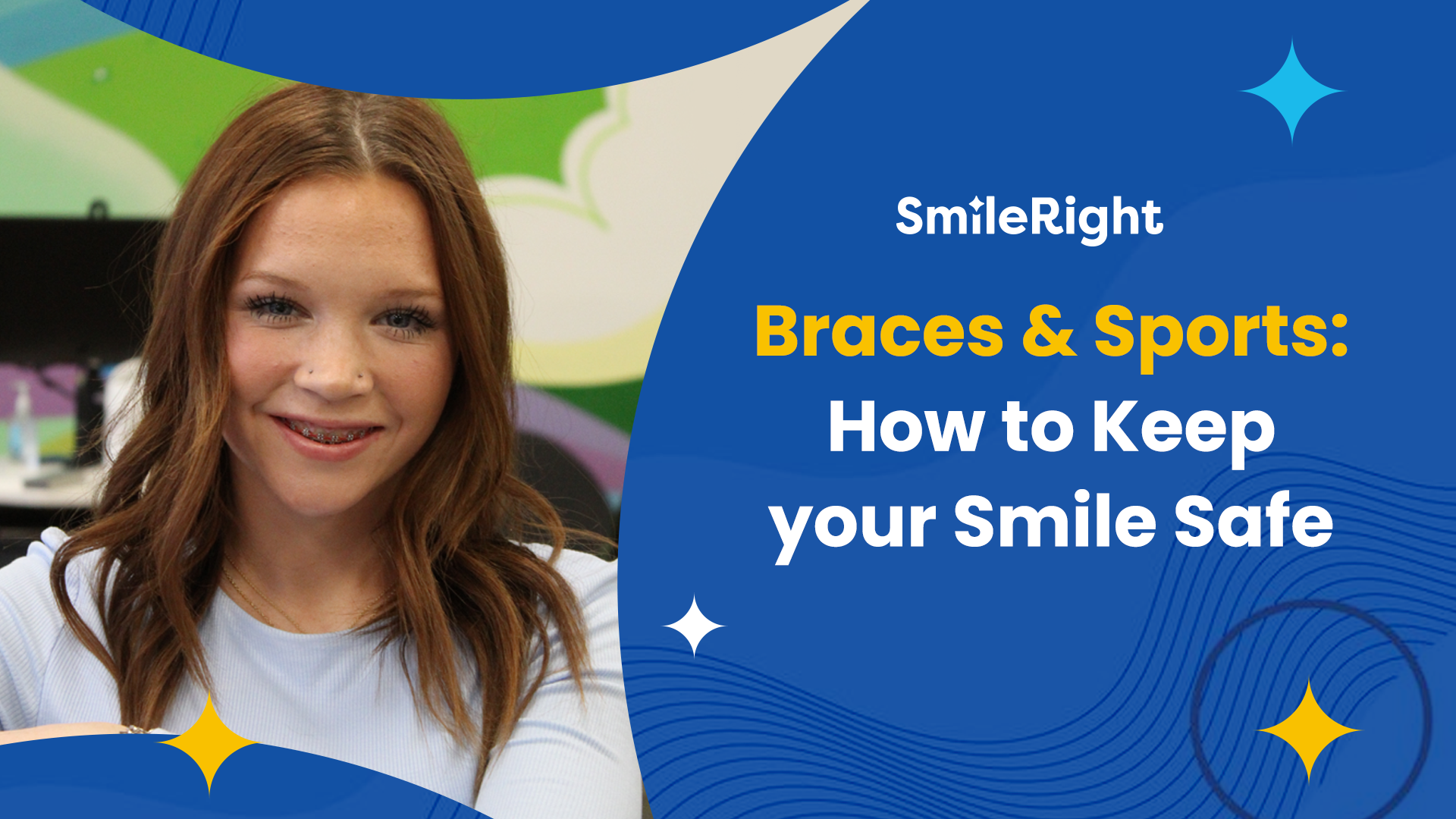Life Hacks for a Comfortable Journey with Braces

Source: Dr. Marketing
Embarking on the journey to a straighter smile with braces is both exciting and transformative. However, you might find your orthodontic adventure with us at SmileRight comes with unique challenges that require a bit of guidance. In this comprehensive guide, we'll delve into practical tips and tricks to ensure your orthodontic journey is as smooth and comfortable as possible.
Mastering Your Oral Hygiene During Orthodontic Treatment in Houston

Maintaining impeccable oral hygiene is paramount during your orthodontic treatment. The intricate design of braces creates additional nooks and crannies where food particles can easily get trapped, increasing the risk of plaque buildup and cavities. To combat this, adopt a meticulous oral care routine. Learn effective brushing and flossing techniques, choose orthodontic-friendly oral care products, and make regular dental check-ups a non-negotiable part of your schedule.
Remember to replace your toothbrush more frequently than usual, as the brackets and wires can cause bristles to wear out more quickly. If you're unsure about the best products for your braces, consult with our orthodontist at SmileRight Braces in Houston, Texas. They can recommend specific toothbrushes, flossers, and mouthwashes to keep your smile clean and healthy.
Dietary Adjustments You Will Have to Make During Orthodontic Treatment

While there might be some dietary adjustments during your orthodontic treatment, this is an opportunity to explore new and exciting food options. Share meal ideas and snack alternatives that are braces-friendly, and offer guidance on avoiding certain foods that may pose a risk to braces.
Experiment with different recipes that are not only delicious but also gentle on your braces. Soft fruits, cooked vegetables, and lean proteins can be prepared in creative ways to keep your meals enjoyable. Consider incorporating smoothies, yogurt, and other soft textures into your diet to make eating with braces a positive and flavorful experience.
Foods to Avoid While Wearing Braces

When wearing braces, it is essential to be mindful of the foods you consume to prevent damage to your braces and ensure the success of your orthodontic treatment. Here's a list of foods to avoid:
- Sticky and Chewy Candies:
- Caramels
- Taffy
- Gummies
- Chewy candies
- Hard Candies and Lollipops:
- Jolly Ranchers
- Jawbreakers
- Hard lollipops
- Crunchy Snacks:
- Popcorn
- Pretzels
- Hard granola bars
- Nuts and Seeds:
- Almonds
- Peanuts
- Sunflower seeds
- Hard Breads:
- Bagels
- Hard rolls
- Crusty bread
- Tough Meats:
- Jerky
- Tough cuts of steak
- Hard sausages
- Raw Vegetables:
- Carrots (unless cooked or cut into small, thin pieces)
- Celery
- Broccoli (unless cooked or cut into small florets)
- Hard Fruits:
- Apples (unless sliced)
- Pears (unless sliced)
- Hard fruits with pits
- Chewy Snacks:
- Licorice
- Fruit Roll-Ups
- Chewy granola bars
- Corn on the Cob:
- The hard and round shape can be challenging to eat with braces.
- Hard Chips:
- Hard taco shells
- Hard tortilla chips
- Ice Cubes and Ice Chips:
- Chewing on hard ice can damage braces and lead to orthodontic issues.
- Hard Candy Canes:
- The hardness and shape can pose a risk to braces.
- Sticky Spreads:
- Peanut butter with nuts
- Chunky spreads
- Hard Shell Tacos:
- The force needed to bite into hard taco shells can be detrimental to braces.
Remember, the key is to avoid anything that is excessively hard, sticky, or requires biting into with force. If you are unsure about a particular food item, it is always best to check with our orthodontist at SmileRight Braces. Adhering to dietary guidelines will help protect your braces, prevent discomfort, and ensure your orthodontic treatment progresses smoothly.
How to Manage Discomfort from Your Braces

It is not unusual to experience some discomfort, particularly in the initial days after getting braces or after adjustments. However, this discomfort is temporary and signals the gradual improvement of your smile. Discover practical tips for managing this discomfort, including the use of orthodontic wax to alleviate irritation from wires and brackets.
In addition to orthodontic wax, a warm saltwater rinse can soothe any sore spots and reduce inflammation. Chewing sugar-free gum can also alleviate tension and promote saliva flow, aiding in the adjustment process. Keep in mind that discomfort is a natural part of orthodontic treatment, but it's temporary, and the end result—a beautifully aligned smile—is well worth it.
If you experience persistent discomfort, do not hesitate to reach out to our orthodontic team at Orthodontics at the Wireworks in Barrie, Ontario and North York, Ontario. They can provide additional guidance and may adjust your treatment plan to enhance your comfort while still achieving optimal results. It's crucial to communicate openly about any concerns or pain you may be experiencing. Your orthodontist has a variety of tools and techniques at their disposal to ensure your journey to a straighter smile is as comfortable as possible.
Consider incorporating relaxation techniques into your routine, such as deep breathing exercises or meditation, to manage stress and tension associated with orthodontic discomfort. Gentle jaw exercises can also help alleviate muscle tension. Remember that each adjustment brings you one step closer to the smile you have always wanted, so stay focused on the positive outcome.
It is essential to follow any care instructions provided by your orthodontist diligently. This includes wearing any prescribed appliances or rubber bands as directed. Consistent follow-through with these recommendations will contribute to a more comfortable experience and ensure that your treatment stays on track.
As you navigate through the discomfort, keep in mind that you are not alone in this journey. Many individuals have successfully overcome the temporary challenges of orthodontic treatment and emerged with beautiful, confident smiles. Seek support from friends or family who have gone through similar experiences, and share your feelings with them. Their insights and encouragement can provide valuable reassurance and motivation.
While discomfort is a natural part of the orthodontic journey, proactive steps and open communication with your orthodontist can significantly enhance your comfort. Embrace the adjustments, both big and small, as they bring you closer to the smile you've always dreamed of. With a positive mindset, a well-informed approach, and the support of your orthodontic team, you can navigate through any temporary discomfort with grace and confidence.
Celebrating Your Milestones: Your Journey, Your Achievements

Acknowledge and celebrate the small victories along the way. Whether you have successfully completed the first week with braces, reached a specific treatment milestone, or seen the initial signs of progress, these achievements are worth celebrating.
Create a milestone journal to document your progress, both in words and pictures. Set small goals and reward yourself when you achieve them. Consider creating a vision board with images of your ideal smile and other personal accomplishments. Celebrating milestones not only boosts your morale but also makes the entire orthodontic journey a more positive and rewarding experience.
By incorporating these practical tips and empowering you with knowledge, this comprehensive guide aims to make your life with braces not only manageable but also an exciting step towards a confident and radiant smile. Remember, each adjustment brings you one step closer to the beautiful smile you have always dreamed of. Embrace the journey, and brace yourself for a transformation that goes beyond your teeth.




